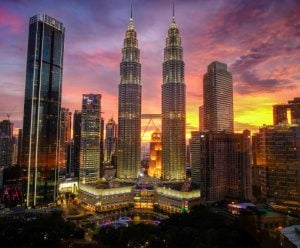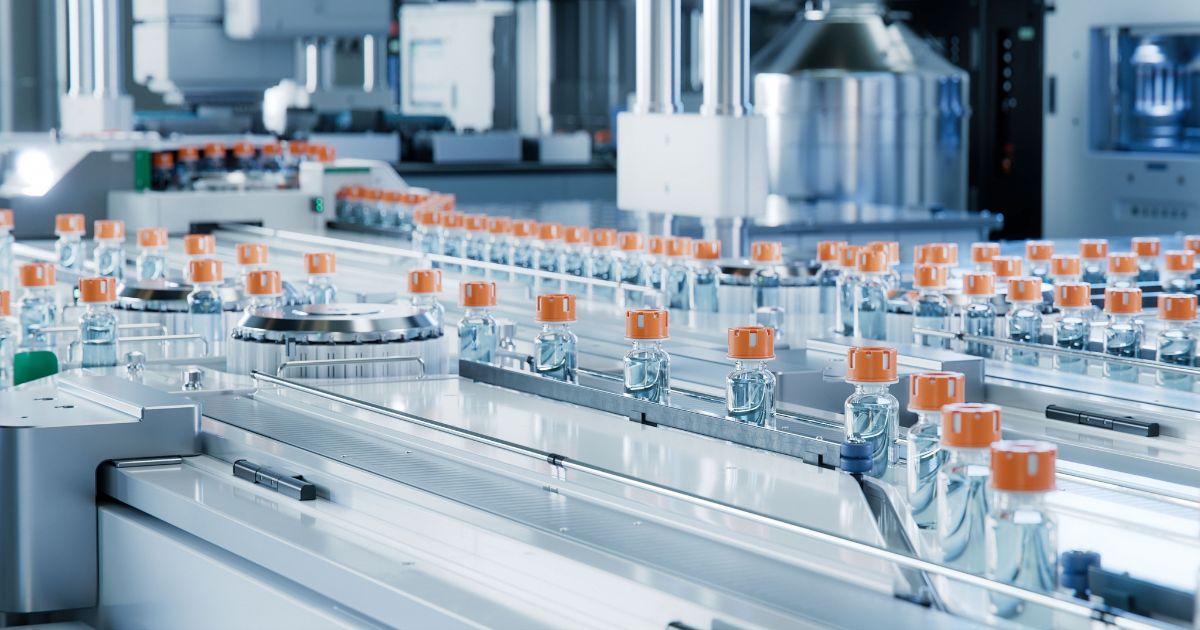
Clinical approach to logistics sets the pace for health sector growth in Asia

The life sciences and healthcare (LSHC) sector is at a strategic inflection point. As longer lifespans, increasing consumer expectations, and the rise of personalized treatments fuel demand for transformative health care, the broader Asian LSHC market is poised for exponential growth. By 2030, it is projected to reach US$5 trillion—driving 40 percent of global sector growth.
Singapore is especially well-positioned to power this expansion. Its strong foundation of skilled talent, advanced manufacturing capabilities, and vibrant research ecosystem have cemented its status as a major LSHC player, not least within the global biopharmaceutical landscape.
Today, eight of the world’s top 10 biotech and pharmaceutical companies by revenue—including Pfizer, Novartis, and Merck—have established facilities in Singapore. In 2023, the sector produced S$18.7 billion worth of pharmaceutical and biologics products, employed over 9,500 people, and contributed around 1.5 percent to national GDP.
Continued government commitment reinforces these strengths—most recently, through a S$500 million investment to boost biomedical research infrastructure and public-private collaboration, as announced in Singapore’s Budget 2025.
A key part of the LSHC growth is a concerted effort by companies like DHL to build a robust logistics network. “As part of DHL Group’s Strategy 2030, we have invested ahead to strengthen our infrastructure and capabilities, ensuring we can meet the evolving and increasingly complex needs of our customers. Our investment goes beyond building warehouses or expanding networks. It is about building a foundation across all our business units that enables faster, more reliable delivery of life-saving medicines and healthcare products,” said Javier Bilbao, CEO, DHL Supply Chain Asia Pacific.
Yet, even as companies prepare to ride a wave of opportunity in the LSHC sector, they must navigate rising economic uncertainties and intensifying global competition. Many are racing to localize clinical trials and move manufacturing and distribution closer to high-demand markets. But rising costs and supply chain complexity remain stubborn hurdles. This underscores the need for businesses to build agile, patient-centric, and future-ready life sciences supply chains.
Responding to a fast-evolving business landscape
As competition intensifies across the global biopharmaceutical industry, enterprises are doubling down on innovation to differentiate and lead. This is driving a renewed emphasis on expanding prescription drug portfolios and accelerating the development of next-generation treatments, particularly in cell and gene therapies (CGTs) and mRNA-based technologies.
These advanced therapies offer the potential to transform health care, delivering curative solutions for previously intractable diseases such as certain cancers, genetic disorders, and rare conditions. At the same time, rapid advances in artificial intelligence (AI) and machine learning (ML) are reshaping the way these therapies are discovered, tested, and brought to market—making the development process faster, more targeted, and cost-efficient.
These breakthroughs mean the advanced therapy medicinal product (ATMP) landscape is evolving rapidly. Valued at US$11.99 billion in 2023, the global ATMP market is projected to grow to US$14.61 billion in 2024 and reach US$35.59 billion by 2032, reflecting a compound annual growth rate (CAGR) of 6.73 percent over the forecast period. This momentum is being powered not only by scientific breakthroughs but also by increasing investor interest and broader shifts toward personalized, precision health care.
Navigating logistical hurdles
However, as companies rebalance their portfolios to capture opportunities in advanced therapies, they must also navigate varying operational and logistical hurdles. One critical challenge in the shift toward more complex biologics and biopharmaceutical-based generics is that these are far more temperature-sensitive than traditional small-molecule drugs.
Even minor deviations in handling or temperature during transit can compromise product integrity, leading to costly losses and potential risks to patients.
In this context, supply chain inefficiencies—whether in infrastructure, visibility, or coordination—pose a serious threat. Without robust and responsive distribution networks, delays and disruptions can ripple across the entire delivery pipeline, particularly for therapies with narrow stability windows or tight administration timelines.
Mastering regulatory frameworks
At the same time, pharmaceutical companies—particularly those expanding into emerging markets across Asia Pacific (APAC)—must often contend with regulatory fragmentation. The region is a mosaic of regulatory frameworks, with different countries typically maintaining their own approval timelines, documentation requirements, and pharmacovigilance protocols.
This patchwork of standards can add complexity to everything from product registration to manufacturing compliance. Companies often need to tailor documentation for each jurisdiction, navigate varying clinical trial requirements, and manage divergent cold chain expectations—all of which can affect time to market and the cost of cross-border operations.
A trusted hub in global supply chains
Thanks to its advanced logistics infrastructure and transparent regulatory environment, Singapore provides a robust launchpad for pharmaceutical companies seeking to scale across the region. For example, the country ranked first in the World Bank’s 2023 Logistics Performance Index, which evaluates factors such as the efficiency of customs and border management clearance and the quality of logistics services.
Singapore Customs’ dwell time of under 10 minutes also underscores its reputation for speed and reliability.
Closing operational gaps with solid partnership support
However, as companies in Singapore address critical issues such as cold chain logistics, regulatory compliance, and scalability for advanced therapies, working with a partner with global capabilities can also be valuable. This can help drive consistency and visibility across regions while ensuring every area of operations has the necessary logistical support.
For example, DHL has the framework and infrastructure to help pharmaceutical firms meet the demands of next-generation therapies and personalized medicine. It has also developed cutting-edge infrastructure specifically tailored to high-complexity healthcare logistics. “In a region where healthcare demand is surging, we enable our customers to focus on innovation and patient care. At the same time, we handle the complexities of supply chain management across all logistics touchpoints - from storage, order fulfillment, and distribution to global shipping and last-mile delivery,” noted Bilbao.
The recently launched 8,200-square-meter DHL Pharma Hub in Singapore exemplifies this commitment. The facility is equipped with specialized temperature-controlled zones—from ambient (15°C to 25°C) to cold room (2°C to 8°C)—that ensure precise storage conditions for sensitive biologics and vaccines. The hub is also Good Manufacturing Practice (GMP) compliant with advanced cold chain infrastructure, including airtight loading docks and dedicated anterooms that ensure uninterrupted temperature stability throughout the logistics process.
Strategically located near Singapore’s Tuas Bio-Medical Park, the Pharma Hub offers seamless connectivity to Changi Airport and Tuas Mega Port, enabling efficient regional and global pharmaceutical distribution. DHL Supply Chain’s trained teams also ensure that every step of the supply chain operates seamlessly and efficiently—from meeting regulatory compliance to proper product handling.
Transforming logistics capabilities for long-term value
As the global pharmaceutical landscape evolves, companies need more than innovation—they need agility, reliability, and scale. With its world-class infrastructure, strategic connectivity, and deep expertise in healthcare logistics, Singapore offers precisely that.
By working with an experienced logistics partner that can reduce the complexity of the pharmaceutical industry’s fast-evolving supply chains, Singapore-based companies can also be better positioned to accelerate growth and deliver the therapies of tomorrow, today.
Establishing a solid partnership of this kind can also help companies free themselves up to continue focusing on their core business—improving patients’ lives.
ALSO WORTH READING

















 English
English